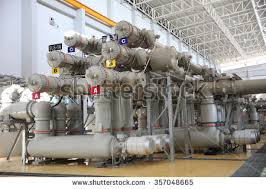
Electrical Engineering
High Voltage & Extra High Voltage Switchgear
| Date | Venues | Fees | Book your seat |
|---|---|---|---|
| 05 Jan - 09 Jan 2025 | Dubai | $ 2900 | Conducted Download Brochure |
| 12 Jan - 16 Jan 2025 | Bahrain | $ 2900 | Conducted Download Brochure |
| 12 Jan - 16 Jan 2025 | Cairo | $ 2900 | Conducted Download Brochure |
| 19 Jan - 23 Jan 2025 | Istanbul | $ 3300 | Conducted Download Brochure |
| 09 Feb - 13 Feb 2025 | Kuala Lumpur | $ 3300 | Conducted Download Brochure |
| 09 Feb - 13 Feb 2025 | Dubai | $ 2900 | Conducted Download Brochure |
| 16 Feb - 20 Feb 2025 | Bahrain | $ 2900 | Conducted Download Brochure |
| 16 Feb - 20 Feb 2025 | Cairo | $ 2900 | Conducted Download Brochure |
| 23 Feb - 27 Feb 2025 | Istanbul | $ 3300 | Conducted Download Brochure |
| 16 Mar - 20 Mar 2025 | Kuala Lumpur | $ 3300 | Conducted Download Brochure |
| 01 Jun - 05 Jun 2025 | London | $ 5500 | Register Now Download Brochure |
| 01 Jun - 05 Jun 2025 | London | $ 5500 | Register Now Download Brochure |
| 10 Aug - 14 Aug 2025 | Sharm El-Sheikh | $ 2900 | Register Now Download Brochure |
| 17 Aug - 21 Aug 2025 | Salalah | $ 2900 | Register Now Download Brochure |
| 07 Dec - 11 Dec 2025 | Istanbul | $ 3300 | Register Now Download Brochure |
| 21 Dec - 25 Dec 2025 | Bahrain | $ 2900 | Register Now Download Brochure |
| 21 Dec - 25 Dec 2025 | Cairo | $ 2900 | Register Now Download Brochure |
| 21 Dec - 25 Dec 2025 | Dubai | $ 2900 | Register Now Download Brochure |
| 28 Dec - 01 Jan 2026 | Kuala Lumpur | $ 3300 | Register Now Download Brochure |
